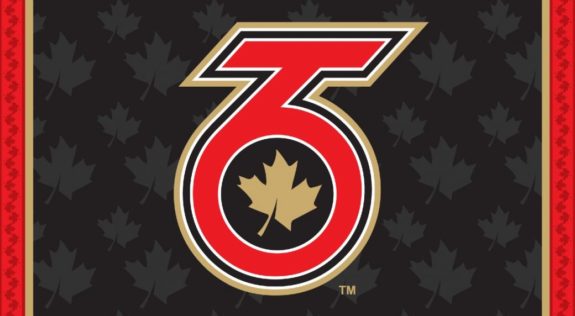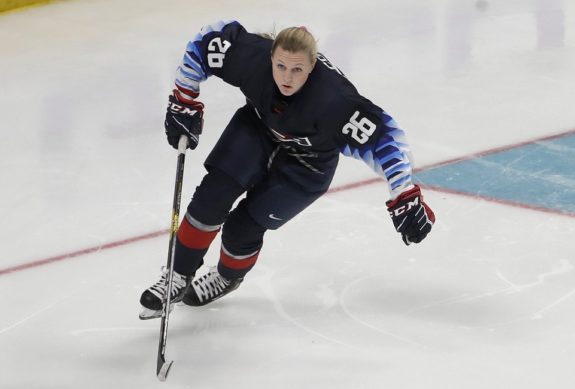
 Ben Steiner
The Hockey Writers
Ben Steiner
The Hockey Writers
19
Reads
0
Comments
The Issues Facing Women’s Hockey in 2020-21
Professional sports leagues are returning across the world, but for women’s hockey in North America, the 2020-21 season is going to be extremely difficult. Through the offseason, the National Women’s Hockey League (NWHL) has expanded to Toronto, while the Professional Women’s Hockey Players’ Association (PWHPA) has restructured its competition format. Although both have planned for the future, the Novel Coronavirus pandemic has thrown a wrench into such plans.
Related: Top 10 Best Ice Hockey Leagues
Neither the NWHL and PWHPA are flush with cash, and nearly every player holds an additional job to support their lifestyle. Women’s hockey in North America simply doesn’t have enough money to establish a “bubble” scenario and hosting games in empty, non-bubble arenas do not make financial sense either. If either organization wants to play in 2020-21, major changes will have to be made.
The Problems Facing the NWHL
Prior to the latest round of expansion, the NWHL could have potentially pulled off a season, maybe even with fans. However, since expanding the league to Toronto, plans have gotten far more complicated. The Toronto Six are the league’s lone club north of the U.S.- Canada border and the Canadian side has been closed to non-essential travel since the beginning of April.
For the NWHL, the Toronto team poses a lot of challenges but there is a way around it. It won’t please those affiliated with the new Toronto hockey club, but its increasingly possible that the NWHL’s only way to play in 2020 would be without the Six.

Many states have begun to allow full hockey games to take place and some summer showcases in the northeastern states have even welcomed spectators. New Hampshire has been hosting the Elite Women’s Summer Hockey League (EWSHL) with no COVID-19 precautions.
NWHL players who live in their team’s cities could continue to work their day jobs, while also competing for the NWHL teams as they would in a regular, pandemic-less year. Although this model would be possible, there are concerns about whether it is truly safe.
If the NWHL were to hold a season, having fans in the stands is crucial. The Minnesota Whitecaps became the first franchise to earn a profit in 2019, and they had the largest attendance in the league. Without people in the arenas, the budgets of the NWHL teams are likely slim to put on a fanless campaign.
Without the Toronto franchise, the league could rely on the leniency of state governments to have a regular season. While effectively eliminating a brand-new team is not a good look for the league, avoiding the border is likely the only way the NWHL will play in 2020-21.
If everything does fall into place for the NWHL to have a season, one would expect them to have a player opt-out option, for those members who do not feel safe returning to the rink.
The Problems Facing the PWHPA
The PWHPA revamped its organizational structure from the inaugural Dream Gap Tour, but then the pandemic hit, sending confusion throughout the players’ association.
The re-structured plan included five regional training hubs, with games against other hubs taking up the majority of the schedule. Additional matchups within the regional hubs were in the plans as well, and they could become increasingly important with travel restrictions still in place.

With New Hampshire, Minnesota, Calgary, Toronto, and Montreal being the training hubs, each are facing their own return-to-play challenges. Similar to the NWHL, the southern hubs are not able to cross the Canadian border, and all players hold secondary jobs.
Related: The WHA – A Look Back at the Upstart Hockey League
Minnesota and New Hampshire hubs could likely play each other with limited restrictions, as hockey has returned in the two states, but the Canadian bases have further problems. Full-hockey games have not yet been cleared in the country, and Hockey Canada has stated that a full return-to-hockey falls on the shoulders of health authorities and governments.
While staying within the country will be easier for a PWHPA than it would be the NWHL, the pandemic and the restrictions around it will continue to prove a challenge.
North American women’s hockey simply does not have the financial capacity to invest in a re-start similar to other professional leagues on the continent, making elite-level competition in 2020-21 in a contentious state.
The post The Issues Facing Women’s Hockey in 2020-21 appeared first on The Hockey Writers.
Popular Articles

















































 Blackhawks Chicago
Blackhawks Chicago Panthers Florida
Panthers Florida Penguins Pittsburgh
Penguins Pittsburgh Rangers New York
Rangers New York Avalanche Colorado
Avalanche Colorado Kings Los Angeles
Kings Los Angeles Maple Leafs Toronto
Maple Leafs Toronto Bruins Boston
Bruins Boston Capitals Washington
Capitals Washington Flames Calgary
Flames Calgary Oilers Edmonton
Oilers Edmonton Golden Knights Vegas
Golden Knights Vegas Senators Ottawa
Senators Ottawa Lightning Tampa Bay
Lightning Tampa Bay Flyers Philadelphia
Flyers Philadelphia Islanders New York
Islanders New York Sabres Buffalo
Sabres Buffalo Red Wings Detroit
Red Wings Detroit Devils New Jersey
Devils New Jersey Hurricanes Carolina
Hurricanes Carolina Blue Jackets Columbus
Blue Jackets Columbus Predators Nashville
Predators Nashville Stars Dallas
Stars Dallas Jets Winnipeg
Jets Winnipeg Wild Minnesota
Wild Minnesota Blues St. Louis
Blues St. Louis Mammoth Utah
Mammoth Utah Sharks San Jose
Sharks San Jose Ducks Anaheim
Ducks Anaheim Canucks Vancouver
Canucks Vancouver


